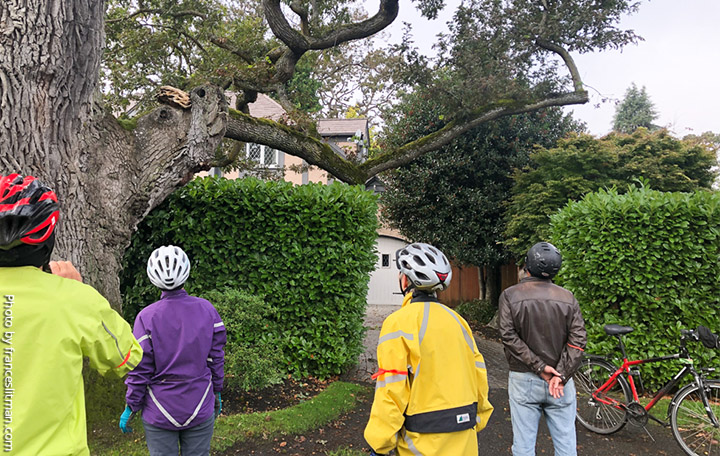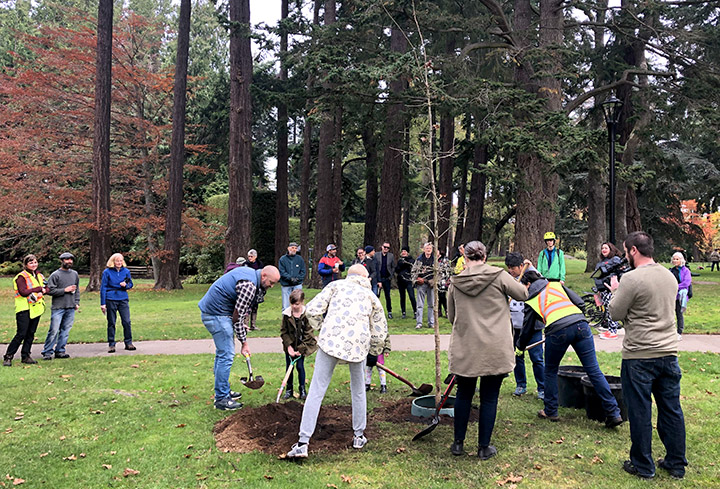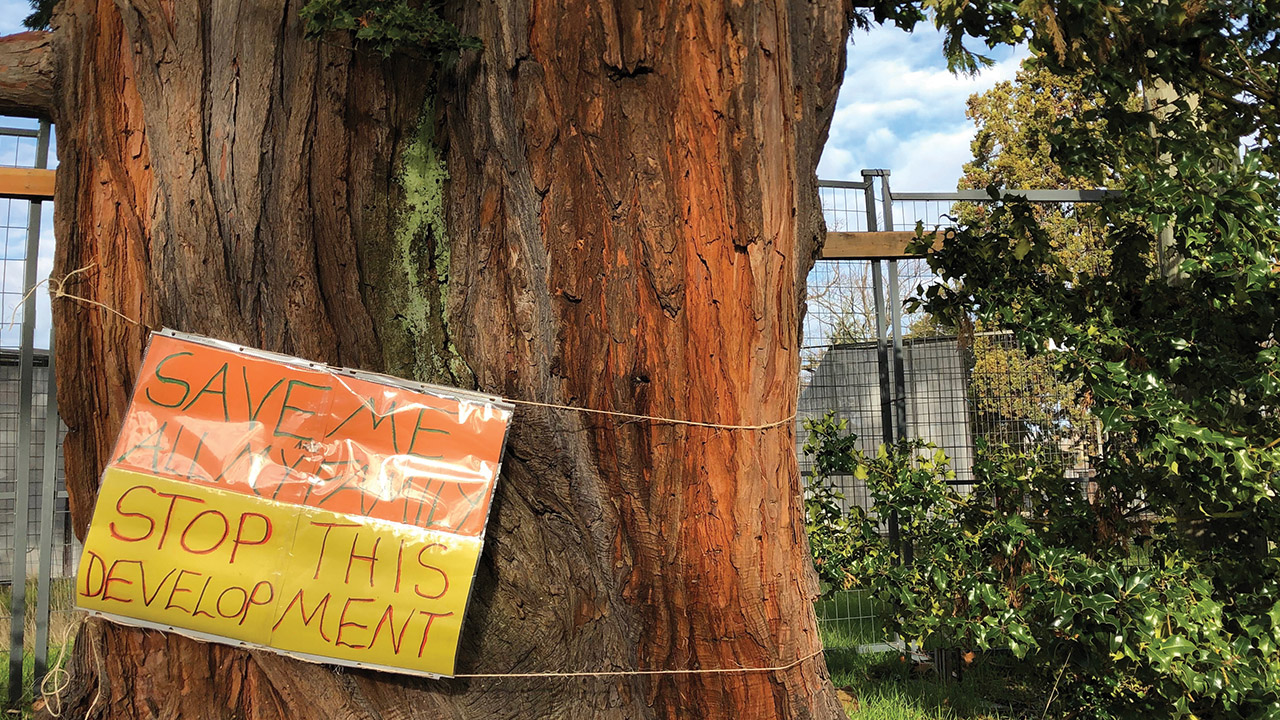Tree Planting, Care, & Preservation
A recent study (July 2019) stated that planting trees (and preventing deforestation) is by far the best way to help mitigate climate change. Both new and mature trees require some care and attention. Learn what is required for trees to survive and thrive at all stages of their lives.
How To Protect Trees
- Ask your town or city about volunteering to plant trees or remove invasive species on public land.
- Attend area council meetings and ask for stronger protection of public trees and incentive programs to help maintain private trees as part of the regional climate action strategy.
- Lobby local government to buy private land to convert to public forests and parks.
- Learn more about the trees you see every day.
- Get involved with local community groups or neighbourhood
associations that advocate for trees, or start your own group. - Follow the Community Trees Matter Network on Facebook. Stay engaged with the CreativelyUnited.org Solutions Hub by sharing information, ideas, events and resources.


- Advocate to local government to require developers to build carefully around mature trees.
- Ask your local government to fund incentives to reward private land owners or developers for retaining trees beyond bylaw requirements.
- Develop and maintain strong community-wide support for urban trees.
- Urge local government to manage the urban forest to maximize watershed health, biodiversity, and conservation of sensitive ecosystems.
- Ask your local government to hire experienced experts with knowledge of permaculture, conservation and landscape ecology.
- Consider creating your own legacy with the gift of a land or a tree covenant.
“Trees or wooded environments of particular value can be protected on private property by registering a tree protection or natural state covenant on the land title. Where a tree on private land is deemed to be significant, the City could also consider helping the homeowner to care for and protect the tree.
“Another approach might be to provide financial incentives, such as a small reduction in municipal property tax or storm water utility bill, for people with a significant tree on their property.”
City of Victoria Urban Forest Master Plan (2013)
Planting Tips & Tree Care
It can take three years of care or more to ensure a sapling survives and thrives. Here are a few tips to consider when planting saplings and trees from Christopher Roddick’s Tree Care Primer and from municipal urban forester, Ryan Senechal
- Think to the future and find the best possible location, so the tree can grow for decades, free from human intervention (ie: telephone
lines, cars, driveways, sidewalks, intended development). - The best time to plant a tree is during the dormant season when soil conditions are moist, rainfall is intermittent, and planting materials are available.
- Stake young trees to ensure a solid structural foundation is established. The stake may be removed once the tree has grown more sturdy.
- For very old or dying trees, techniques like retrenchment pruning to reduce canopy, cabling and bracing to support limbs, root monitoring, and safety evaluations can add years and ensure safety.
- Maintaining proper soil biology through mulching is critical for ensuring healthy mature trees. However, do not heap mulch right up to the trunk or allow rocks, etc. to rest against the trunk as it can stay too moist and allow rot or pests to enter.
- The City of Nanaimo has a great video on how to plant trees.
- Ensure that the roots are spread out when planted, rather than encircling the tree (as can happen the tree becomes root bound in the pot). Not doing this can create ‘girdling roots’ later on, which can prevent a tree from thriving or even kill it.
- Pick a species that can establish itself quickly, is drought and pest resistant, and resilient. Trees that are native to the region and have survived the longest are generally the most resilient and the best choice.
- Be sure to research the best growing conditions for your species and use that information to pick the most appropriate location (e.g. sunny, shaded, dry or moist, etc.)
- Give your new tree the best chance of survival by giving it adequate soil for best outcomes in tree health and stability. Leave plenty of room for it to grow with no heavy or sustained weight on its roots zone. Protect the tree from being eaten or disturbed.
- Be sure to water and care for your tree. Early morning watering is considered best. Avoid watering the tree’s foliage or watering during the heat of the day. The first three years are critical to getting your tree established, but with warmer, dryer conditions you may need to care for the tree longer (the City of Victoria maintains saplings for five years). Water and mulch are essential to its survival. Call on municipal arborists or ISA Certified Arborists for help.
- A mistake many people make is to plant a tree too deep. It should be planted allowing the root flare (also called the root collar) to show. Sometimes trees even come from the nursery planted too deep in the pot, so it’s something to be mindful of.
Trees4Tomorrow – Tree Planting on Hornby Island
One of the two northernmost Gulf Islands, two ferry rides away from Vancouver Island, is Hornby Island, a haven of beautiful beaches and forests inhabited by less than 2,000 full-time inhabitants but visited by hundreds of thousands each year.
Here, Rebecca Carey, a conservationist and professional tree planter, teamed up with Grant Scott, a retired forester to undertake the goal of planting 10,000 trees in less than six months on Hornby Island and other Gulf Islands. Seeing the steady decline of native Cedars and Alders in the past 10 years and knowing that it takes at least 10 years for a new tree to become carbon sinks, Rebecca founded Trees4Tomorrow, a grassroots movement to purchase seedlings and get them into the ground. Learn more about this inspiring story in this short video.
The Sequoia Solution – Guerrilla Tree Planting in Vancouver
Meet a tree lover whose deep childhood connection with Mother Earth has taken this mother of two on a mission to not only pay for and plant 2,500 Sequoia seedlings and 600 other varieties of more common BC trees since September 2019.
Susan Bibbings from Vancouver, BC, is the founder of SequoiaSolution.org. She believes that planting a tree is equally as healing to humans as healing our relationship with Mother Earth and is just as important as the carbon sequestration that trees offer. Learn more here in this short video interview with Frances Litman, founder of CreativelyUnited.org and co-founder of the Community Trees Matter Network.
More from the Toolkit
Why We Love Trees
Trees offer a multitude of benefits that many of us take for granted. Scientists are discovering that trees are far more sophisticated and valuable as a living resource than we ever imagined.
Standing Up For Trees
Want to know what you can do to protect and preserve trees? Here are some straightforward ways and resources to make a difference in your neighbourhood, including sample letters to write, how to approach local media and municipal authorities, resources, neighbourhood associations and groups, and handy email addresses for sending letters.

